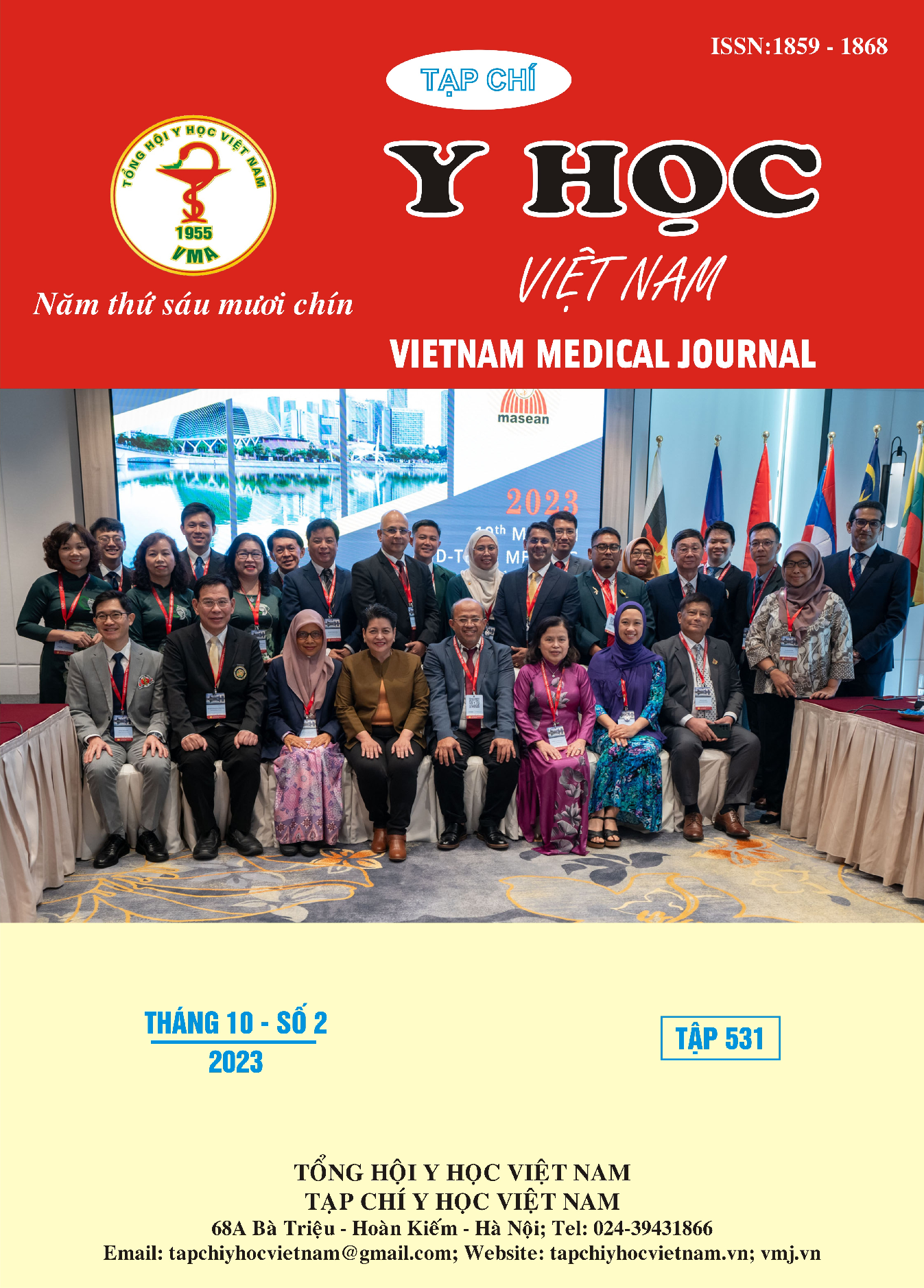EVALUATE RESULTS OF MIRROR THERAPY IN PATIENTS WITH COMPLEX REGIONAL PAIN SYNDROME AFTER HEMIPLEGIA DUE TO ISCHEMIC STROKE
Main Article Content
Abstract
Objectives: To evaluate the results of mirror therapy in patiens with Complex regional pain syndrome after ischemic stroke. Patients and methodology: Including 21 patients diagnosed with hemiplegia due to ischemic stroke for the first time being treated at Hanoi Rehabilitation Hospital from November, 2022 to July, 2023. The patient received a patient-specific conventional stroke rehabilitation program and received additional mirror therapy program for 4 weeks, 5d/w, for 30 min/d. Evaluation after 4 weeks scores of visual analog scale (VAS) for pain severity, edema, Fugl-Meyer Assessment (FMA) for upper limb function. Results: The common age is ≥ 60, accounting for 57,1%, the mean age is 62,5 ± 16,2. The rate of patients with shoulder subluxation is 76,2%. 17 of 21 patients (80,95%) diagnosed with post-stroke CRPS within 1–3 months after stroke. After 4 weeks, the patients in the mirror therapy showed statistically significant (p < 0.05) improvement for all measures (2,23 ± 0,72 for VAS score; 1,77 ± 0,72 cm for oedema measurement and - 6,95 ± 0,64 for FMA score). Conclusion: Addition of mirror therapy to a conventional stroke rehabilitation program improves pain perception, edema and functions of the upper limb in patiens with complex regional pain syndrome after ischemic stroke.
Article Details
Keywords
Complex regional pain syndromes, ischemic stroke, mirror therapy.
References
2. Elsamadicy AA, Yang S, Sergesketter AR, et al (2018), Prevalence and Cost Analysis of Complex Regional Pain Syndrome (CRPS): A Role for Neuromodulation. Neuromodul J Int Neuromodul Soc;21: 423-430
3. Kim JY, Yoon SY, Kim J, Jeong YH (2020), Neural substrates for poststroke complex regional pain syndrome type I: A retrospective case-control study using voxel-based lesion symptom mapping analysis. Pain;161: 1311-1320.
4. Lý Minh Đạo, Phạm Thị Bình Minh, Đặng Thị Kim Thoa, Phan Quan Chí Hiếu (2016), Khảo sát đặc điểm hội chứng đau vùng phức tạp (CRPS) trên bệnh nhân đột quỵ. Tạp chí Y học TP Hồ Chí Minh; tr 94-99.
5. Pervane Vural S, Nakipoglu Yuzer GF, Sezgin Ozcan D, Demir, Ozbudak S, Ozgirgin N (2015), Effects of mirror therapy in stroke patients with complex regional pain syndrome type 1: a randomized controlled study. Archives of Physical Medicine and Rehabilitation;97:575-81.
6. Sourov Saha, Mainak Sur, Gargi Ray Chaudhuri, Shabnam Agarwal (2020), Effects of mirror therapy on oedema, pain and functional activities in patients with poststroke shoulder‐hand syndrome: A randomized controlled trial. John Wiley Sons Ltd;1-8.
7. Wittkopf PG, Johnson MI. Mirror therapy (2017), A potential intervention for pain management. Revista da Associacao Medica Brasileira; 63: 1000-1005
8. Yu-Chi Su, Yao-Hong Guo, Pei-Chun Hsieh, Yu-Ching Lin (2021), A Meta-Analysis and Meta-Regression of Frequency and Risk Factors for Poststroke Complex Regional Pain Syndrome. MDPI.


